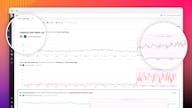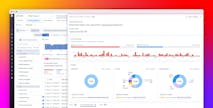What is AIOps?
In today’s demanding business environment, IT Operations staff are often overwhelmed with a plethora of issues, such as meeting service level agreements (SLAs), tracking issues across their environment, preventing or minimizing downtime and outages, troubleshooting, and resolving tickets. As network, computing, and cloud-based infrastructure have grown in complexity, tools must evolve as well.
AIOps (Artificial Intelligence for IT Operations) is a discipline that leverages machine learning algorithms to identify the root cause of incidents, helping teams wrangle incoming alerts, remove duplicate alerts, identify false positives, and provide early anomaly, fault and failure (AFF) detection and analysis.
As network, computing, and cloud-based infrastructure have grown in complexity, tools must evolve as well. Enter AIOps. Gartner defines AIOps this way: “AIOps combines big data and machine learning to automate IT operations processes, including event correlation, anomaly detection and causality determination.” While the term “AI” has been bandied about for large language models, high-performance computing, and chatbots, the purpose of AIOps is to corral the vast amounts of data generated by monitoring platforms for IT systems, applications, and infrastructure for insights, detection, stability, and prevention. Implementing AIOps provides crucial assistance and improves an organization’s ability to monitor and manage its IT environments.
What are AIOps practices and use cases?
AIOps helps your team more effectively manage and monitor infrastructure. Consider the following practices and techniques for AIOps.
Proactive incident detection and prevention: Through monitoring and autodetection, AIOps not only monitors system behavior but predicts potential incidents before they occur. This advanced capability improves system reliability by addressing issues, implementing patches, forecasting and resolving possible errors before they affect the user experience.
Reduce noise and alert fatigue: Through intelligent filters and routing interrelated events, AIOps improves and streamlines operational processes by reducing the burden on IT Operations when receiving and prioritizing alerts. By analyzing the relationships of events, AIOps helps teams identify false positives or define the underlying root cause of these events with a centralized, contextual view.
Reduce Mean Time to Resolution (MTTR): AIOps helps IT Operations detect, investigate, and remediate issues, reducing the overall time to provide solutions. Teams can focus on the resolution of the overall problem rather than multiple teams and activities chasing a separate event. A reduction in MTTR means faster troubleshooting, less time spent fruitlessly searching for or testing fixes, and reduced user downtime.
Improved scalability: As computing resources have grown, not only in size but in complexity, the ability to adapt to the needs of an ever-growing IT infrastructure becomes crucial. AIOps adapts to this increasing number of alerts, events, requests, data, users, and workloads. Utilize AIOps to provide key insights and analysis as demand grows.
Cross-domain insights: AIOps provides a holistic approach and clarity into the current state by providing insights and visibility across different teams and domains. This means that AIOps platforms can integrate and correlate data from various sources, such as logs, metrics, and events. By consolidating & analyzing this data, AIOps helps create a unified view of the IT environment, fostering collaboration among teams that might traditionally operate in silos. This leads to shared insights and a common understanding of the state of the IT landscape and enables teams to work together more effectively to deliver and maintain reliable IT services.
How does AIOps work?
AIOps’ ingestion, detection, forecasting, and response capabilities work in collaboration with IT Operations’ existing monitoring and observability platforms.
First stage: Data ingestion into the AIOps platform from various sources.
Second stage: Leveraging AI/ML technologies and methods to analyze incoming and historical data to:
- Detect anomalies and outliers.
- Correlate events to determine if they are interrelated or interconnected, reducing alert noise and mean time to resolution and preventing duplicative effort from multiple teams.
- Provide options to address the issues.
- Assign tasks to staff to implement solutions.
- Automate remediation workflows across tools and services to resolve the issues
What are the benefits of AIOps?
Network Operations Center (NOC) staff, IT Operations teams, DevOps engineers, and site reliability engineers (SREs) all benefit from AIOps in the following situations:
Proactively address issues before they impact performance and cause downtime: Complex IT infrastructures are composed of distributed, ephemeral architectures, CI/CD pipelines, hybrid, multi-cloud environments, and interconnected systems and applications. Cascading failures, often the result of deeply interconnected systems and microservices, are especially troublesome. By coupling AI/ML with real-time data analysis, implementing AIOps prevents incidents from turning into outages by proactively detecting and addressing issues before they affect users or performance.
Reduce alerts and streamline alert triage: Monitoring tools generate alerts for various events and can quickly overwhelm any IT staff. AIOps intelligently correlates and prioritizes alerts, reducing alert fatigue.
Troubleshoot issues: Through analysis, an AIOps platform understands the relationships and dependencies between various components, helping teams trace the impact of changes and identify the root causes of failure. AIOps also helps efficiently analyze large volumes of data (metrics, traces, logs) for insights and context. Natural language queries give teams an advantage by providing insights and context when troubleshooting issues.
Automate incident response and remediation: With the help of AIOps, teams are able to leverage automation and trigger remediation workflows. These include restarting services, scaling infrastructure resources, or removing users from security groups and settings, or sending notifications to appropriate teams—thereby reducing unnecessary human resource intervention and time.
What challenges are associated with AIOps?
There are specific challenges that come with IT Operations adopting an AIOps platform.
Data quality: AIOps only works well within an IT infrastructure based on observability: the quality and quantity of the data it collects. Siloed observability data and lack of tagging often prevents the AIOps platform from deriving meaningful insights regarding an IT environment, including critical contextual information about the data being analyzed, and comprehensive data to effectively identify patterns, correlations and anomalies, and tracing back issues to their source. AIOps requires good coverage of data from the entire environment. Without it, AIOps cannot accurately predict or forecast future performance or issues.
IT topology: a lack of knowledge concerning the mapping of the IT infrastructure (physical as well as data) can only hinder the deployment of an AIOps platform. Teams must map what database is connected to what service, and what host that service is running on, so topology more along the lines of mapping of the interconnected components, services, and their dependencies (rather than hardware assets) equates to an understanding how different elements of a system are connected and interact. This includes understanding the relationships between servers, databases, networks, and other components. This awareness provides an AIOps platform with an understanding of the historical data as well as current usage. Additionally, this holistic view of the IT environment allows for a clear understanding of how the systems are connected to each other and the relationships between components, helping to quickly pinpoint root causes of issues, understand and visualize the impact of an incident, anomaly, or change, and enable auto remediation to take place.
Interoperability with existing monitoring tools is important to ensure that AIOps can quickly access and analyze relevant data, leading to faster incident detection and response, while interoperability/integration with ITSM tools can avoid disruptions in existing incident response workflows and reduce MTTR.
What should you look for in an AIOps solution?
When evaluating AIOps platforms, consider the following features:
Data ingestion and integration: Review the AIOps solution’s ability to ingest and analyze data from various sources, including logs, metrics, events, and performance data from infrastructure components, networks, applications, and cloud services.
Performance monitoring and anomaly/outlier detection: The AIOps solution should provide continuous monitoring of system performance and resource utilization to help identify deviations from normal system behavior or performance benchmarks. By using machine learning algorithms to analyze historical data and identify patterns, an AIOps solution can enable early detection of anomalies and outliers to proactively address potential incidents.
Event correlation: The AIOps solution should have the capability to correlate events, reduce duplicated alerts, and provide a holistic view of the IT environment.
Root Cause Analysis and contextual insights: The AIOps solution should assist in pinpointing the root cause of monitoring alerts by automatically identifying causal relationships between symptoms across applications and infrastructure—connecting contextual insights with events and problems. By accelerating the troubleshooting process, the AIOps tool should narrow the scope of investigation, enable faster resolution of incidents, and significantly reduce the mean time to resolution (MTTR).
Automation and Orchestration: AIOps tools should be capable of automating routine and repetitive tasks, autonomously resolving known issues to accelerate incident resolution, and coordinating and executing complex workflows across different IT systems.
Integration with ITSM (IT Service Management): AIOps solutions should integrate with ITSM tools, ensuring seamless communication between IT operations and service management processes.
Learn more about AIOps
Discover how Datadog uses machine learning for monitoring infrastructure at scale, including automated detection, correlation of the root causes of issues, and anomaly detection. Also, learn more about Datadog and AIOps by downloading Datadog’s Machine Learning and AIOps Solution Brief.



